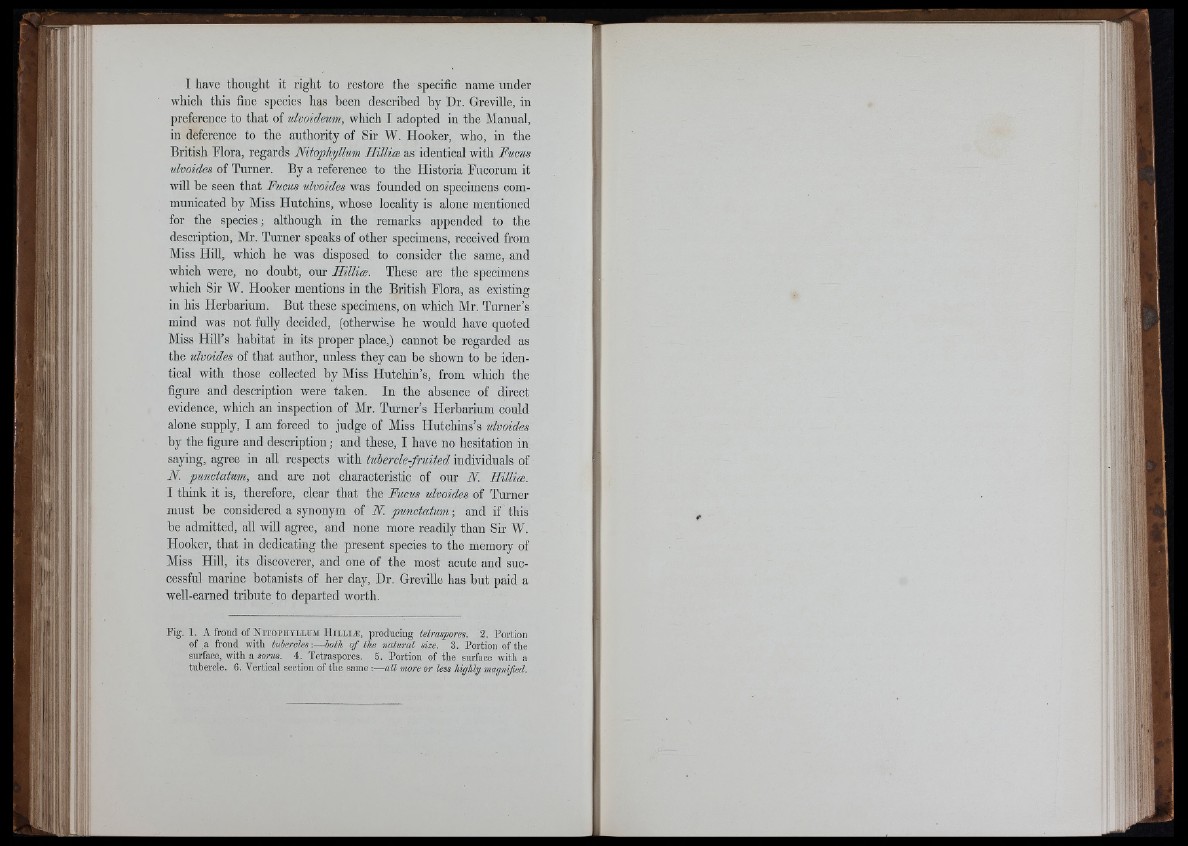
-J',:
II
I have thought it right to restore the specific name under
which this fine species has been described by Dr. Greville, in
preference to that of ulvoideum, which I adopted in the Manual,
in deference to the authority of Sir W. Hooker, who, in the
British Flora, regards Nitophyllum Hillice as identical with Fucus
ulvoides of Turner. By a reference to the Historia Fucorum it
will be seen that Fucus ulvoides was founded on specimens communicated
by Miss Hutchins, whose locality is alone mentioned
for the species; although in the remarks appended to the
description, Mr. Turner speaks of other specimens, received from
Miss Hill, which he was disposed to consider the same, and
which were, no doubt, our Hillioe. These are the specimens
which Sir W. Flooker mentions in the British Flora, as existing
in his Herbarium. But these specimens, on which Mr. Turner’s
mind was not fully decided, (otherwise he would have quoted
Miss Hill’s habitat in its proper place,) cannot be regarded as
the ulvoides of that author, unless they can be shown to be identical
with those collected by Miss Hutchin’s, from which the
figure and description were taken. In the absence of direct
evidence, which an inspection of Mr. Turner’s Herbarium could
alone supply, I am forced to judge of Miss Hutchins’s ulvoides
by the figure and description ; and these, I have no hesitation in
saying, agree in all respects with tuhercle-fruited individuals of
N. punctatum, and are not characteristic of our N. Hillioe.
I think it is, therefore, clear that the Fucus ulvoides of Turner
must be considered a synonym of N. punctatum ; and if this
be admitted, all will agree, and none more readily than Sir W.
Hooker, that in dedicating the present species to the memory of
Miss Hill, its discoverer, and one of the most acute and successful
marine botanists of her day, Dr. Greville has but paid a
well-earned tribute to departed worth.
Fig. 1. A frond of N ito p h y l lu m HiLLiiE, producing tetraspores. 2. Portion
of a frond witli tuhercles:— both o f the natural size. 3. Portion of the
sm-face, with a sorus. 4. Tetraspores. 5. Portion of the surface with a
tubercle. 6. Vertical section of the same:—all more or less highly magnified.
Iii
li'i
Iv
hi